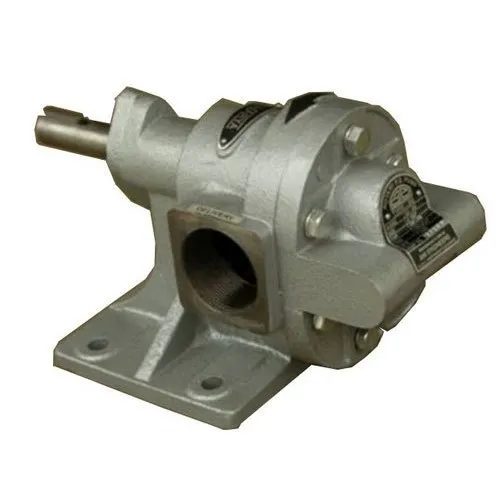An external gear pump uses the meshing of gears to pump fluid by displacement. They are one of the most common types of pumps for hydraulic fluid power applications.
Working:
- External gear pump uses two identical gears rotating against each other -- one gear is driven by a motor and it in turn drives the other gear.
- Each gear is supported by a shaft with bearings on both sides of the gear.
- As the gears come out of mesh, they create expanding volume on the inlet side of the pump. Liquid flows into the cavity and is trapped by the gear teeth as they rotate.
- Liquid travels around the interior of the casing in the pockets between the teeth and the casing -- it does not pass between the gears.
- Finally, the meshing of the gears forces liquid through the outlet port under pressure.
Range:
(DGLP Series) (Low Pressure range):
- Max. Capacity: 1000 Ipm.
- Max Pressure: 12 bar.
- Max.Viscosity: 100000 cSt.
Material of Construction:
- Body: Cast Iron/Carbon Steel/SS.
- Rotor: Carbon Steel / SS.
(DGHP Series) (High Pressure range):
- Max. Capacity: 225 Ipm.
- Max Pressure: 250 bar.
- Max.Viscosity: 1000 cSt.
Material of Construction:
- Body: Alluminium alloy /Cast Iron.
- Rotor: Carbon Steel.
Features:
- Only two rotating parts matting externally have the principle of gear within gear.
- Single-gap construction reduces leakage to a minimum.
- Gears are well supported with the help of four bearings.
- Self-priming in nature.
Applications:
- Transfer of liquids.
- Booter application.



